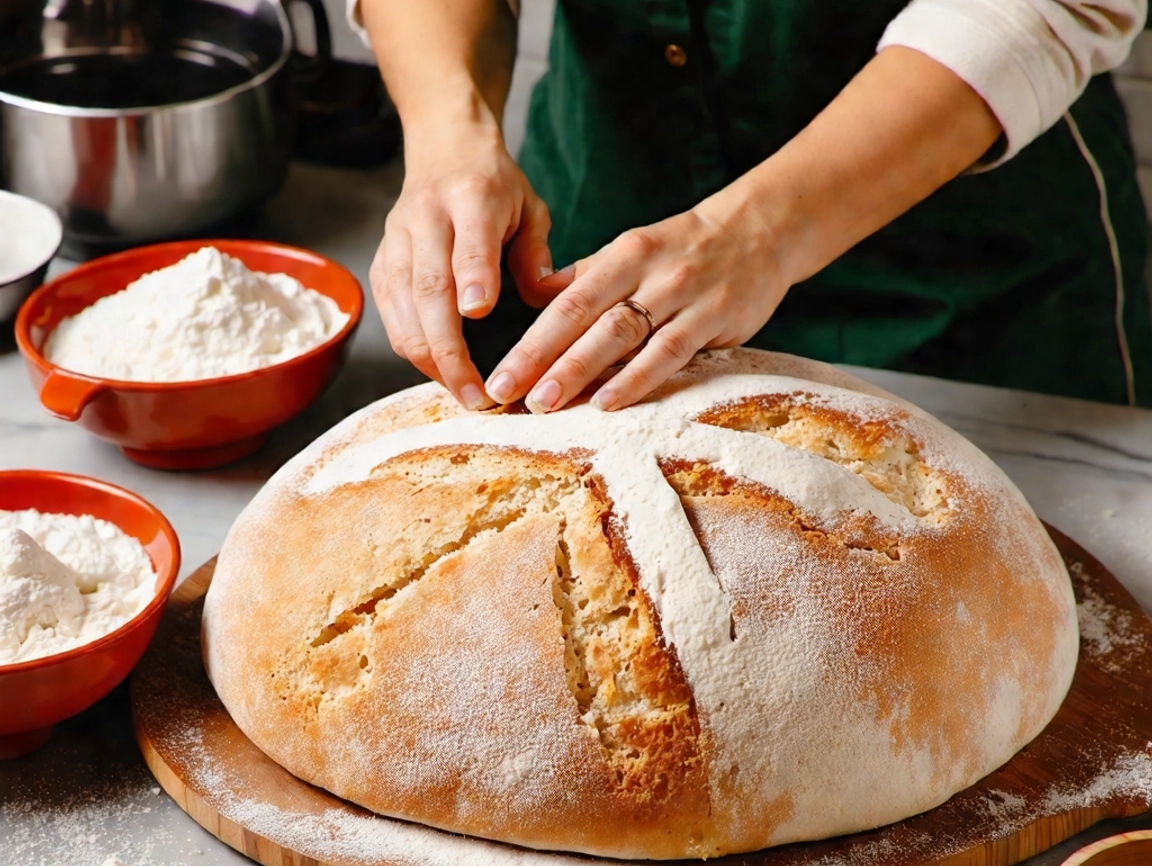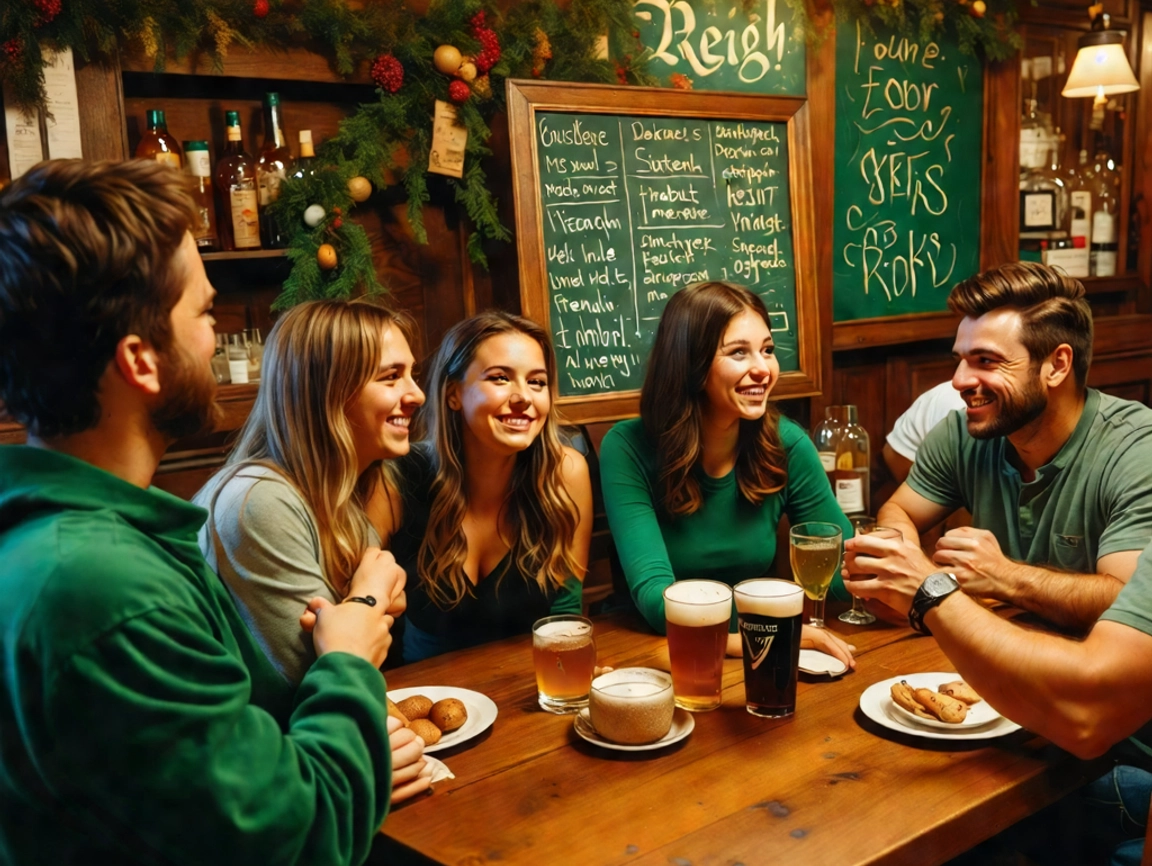Your taste buds get tickled, and so does your language improvement. Just imagine learning Irish while working on a fragrant loaf of traditional Irish soda bread; it is a match made in culinary heaven. For the very first time, in one unique and mouth-watering approach, comes fun baking along with an adventure in learning a new language under one roof. That indeed would fill the air with bread freshness and have one rolling their Rs into the perfect Irish pronunciation in a snap. Real immersion into the language, if you will, in the blink of an eye.
The Relationship Between Language Learning and Cooking
Ironically, the similarity of the two makes language learning and cooking the perfect partners in an immersive educative experience. Both activities employ multiple senses, offering a real treasure chest for memory to form and skills to be acquired. While learners remember words, practicing Irish while baking traditional soda bread creates real associations in the brain. The smell of freshly baked bread, the texture of dough, and the taste of the finished product all become powerful memory triggers for Irish vocabulary and phrases.
Cooking, much like language, is also a means of expressing culture. Learners engage with Irish culture, history, and customs by baking Irish soda bread. This cultural context provides real-world applicability to the words and phrases learned. The repetitive nature of cooking mirrors many language-learning techniques.
Just as bakers repeat certain steps in a recipe, students learning the language reinforce key vocabulary and grammar. Measuring ingredients, mixing, kneading, and baking give ample opportunities to practice Irish numbers, verbs, and food-related terms.
Both skills require patience, practice, and a willingness to make mistakes. The tangible results of baking provide immediate feedback and a sense of accomplishment, spurring learners on in their language journey.
A Brief History of Irish Soda Bread
Irish soda bread was born in the 1830s when baking soda was introduced to Ireland. Made from the simplest ingredients and using the easiest methods, it soon became a staple in every Irish home. The low gluten content of native Irish wheat precluded the use of yeast bread but was perfect for quick breads using baking soda as a leavening agent. The traditional recipe calls for just four ingredients: flour, salt, baking soda, and buttermilk.
Its popularity soared during the Great Famine of the 1840s, as it kept many Irish families going. A cross cut into the top wasn’t just for decoration but was steeped in Irish folklore, to let the devil out or allow fairies to escape.
Today, it remains a favorite in Irish cuisine, especially on St. Patrick’s Day. Its enduring popularity speaks to its cultural significance and the role it plays in connecting generations through shared culinary traditions.
The Secret Ingredients to Irish Soda Bread
The beauty of Irish soda bread lies in its simplicity. The key ingredients are flour, baking soda, salt, and buttermilk. Modern recipes may add sugar for sweetness, butter for richness, eggs for strength, raisins for extra flavor, and caraway seeds for an unusual twist.
Basic Irish Vocabulary of Baking
Baking soda bread offers a great opportunity to learn and improve your vocabulary concerning cookery and utensils in Irish. For instance, a babhla is used for mixing ingredients, and a spúnóg for stirring. Other useful terms include scian for knife, tráidire bácála for baking tray, and cupán tomhais for measuring cup.
Step-by-Step Guide to Baking Irish Soda Bread
Let’s bake some traditional Irish soda bread while practicing Irish:
- Mix your dry ingredients (Comhábhair thirime) – flour (Plúr), baking soda (Sóid aráin), and salt (Salann) – in a bowl (Babhla).
- Add sugar (Siúcra) or caraway seeds (Síolta caraway) if desired, and mix with a spoon (Spúnóg), practicing Irish vocabulary as you go.
- Add buttermilk, eggs, and butter if using them, and gently fold the wet ingredients into the dry mix using a wooden spoon. Avoid overmixing.
- Shape the dough into a round loaf on a floured surface and cut a deep cross on top with a sharp knife.
- Bake in a preheated oven at 425°F for 30-40 minutes until golden brown.
Irish Phrases to Use While Baking
Enhance your baking experience with these useful Irish phrases:
- “Tosaigh ag bácáil!” (Start baking!)
- “Cuir isteach na comhábhair” (Add the ingredients)
- “Measc le chéile iad” (Mix them together)
- “Fuinigh an taos” (Knead the dough)
- “Tá sé réidh!” (It’s ready!)
Cultural Significance of Soda Bread to Ireland
Irish soda bread symbolizes survival, resourcefulness, and tradition. It was an everyday staple in rural Ireland, with households commonly baking fresh loaves each morning. The cross on the bread, serving a practical purpose for even baking, was also believed to ward off evil spirits and bring good luck.
Pair Your Soda Bread with Irish Beverages
Irish soda bread pairs well with traditional beverages like tea, coffee, Guinness, Smithwick’s Ale, or a glass of Irish whiskey. Its dense texture complements these rich, flavorful drinks perfectly.
How to Perfect Irish Pronunciation: Tips
Practice Irish pronunciation by focusing on vowel sounds and consonant clusters like bh and mh. Try some Irish tongue twisters for fluency: Tá an t-arán úr mór.
Conclusion
Success in learning Irish is almost guaranteed when combined with baking soda bread. The process not only enhances language acquisition but also creates memorable cultural experiences. So tie on your apron, grab an Irish dictionary, and get ready to knead your way to fluency!



